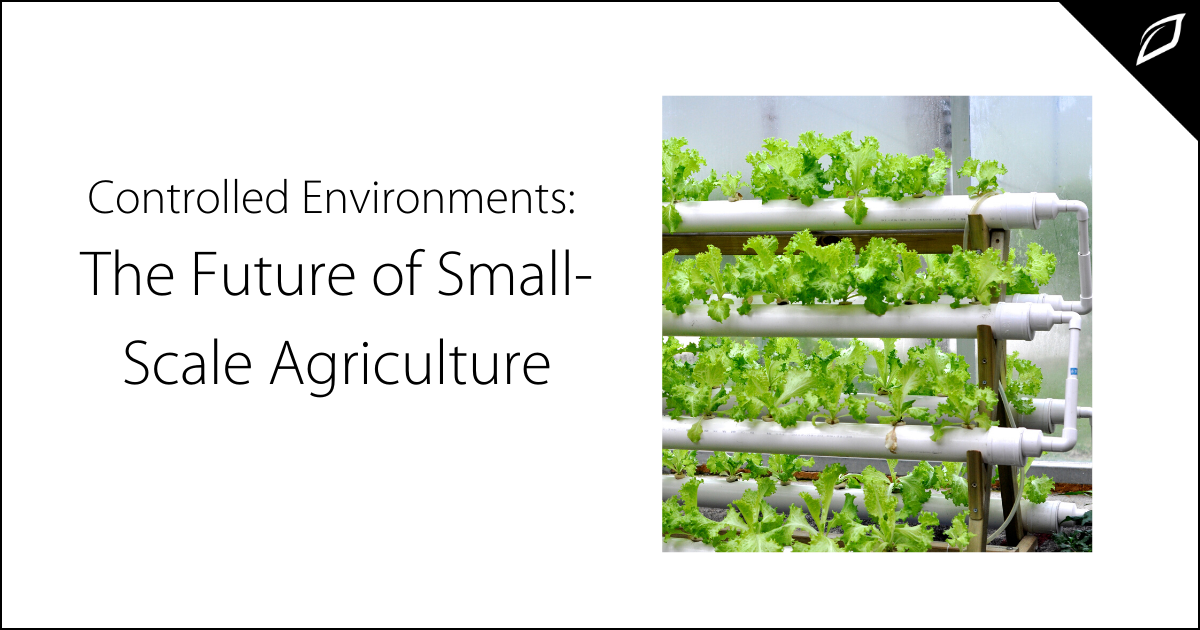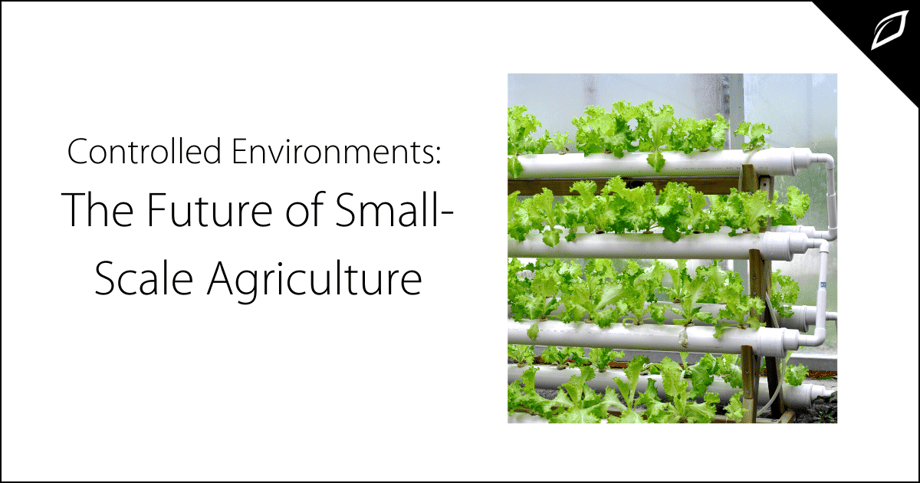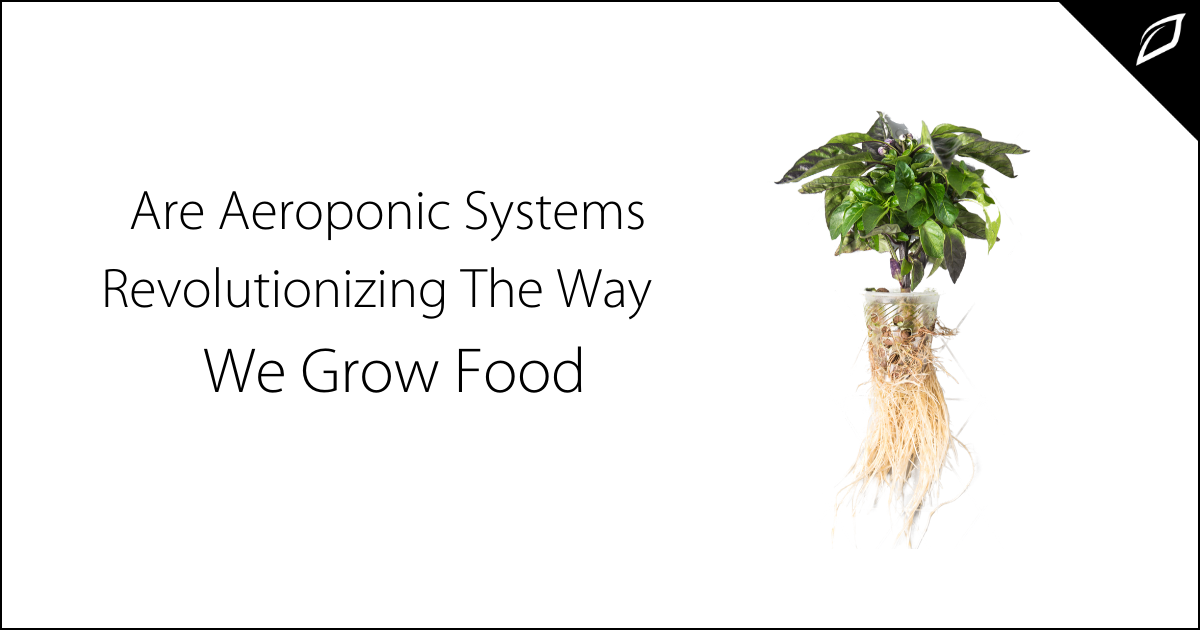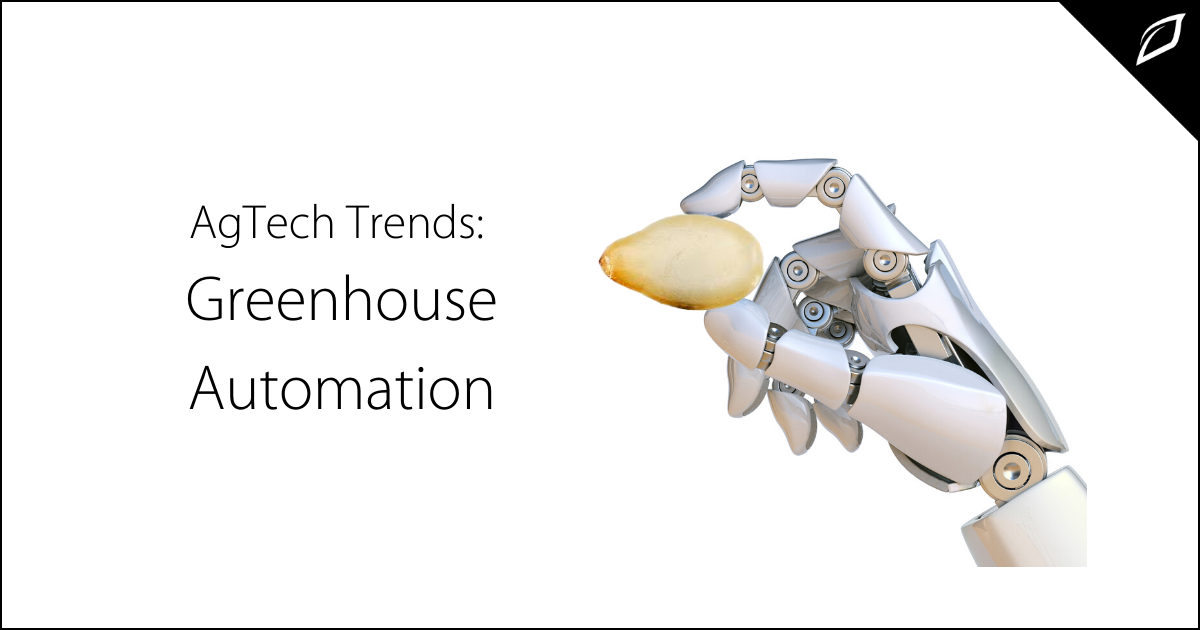Are Aeroponic Systems Revolutionizing The Way We Grow Food?
According to one recentreport, the aeroponics segment will experience growth of over 21 percent from 2017 to 2024—the largest compound annual growth...
2 min read
 Ted Tanner, CEO and Co-Founder
:
Apr 25, 2018 8:00:00 AM
Ted Tanner, CEO and Co-Founder
:
Apr 25, 2018 8:00:00 AM


Many experts believe small-scale agriculture is the future of growing. For those who choose that path, success may be closely tied to controlled environments and the use of agricultural technologies.
To understand how ag-tech drives success in small-scale farming, it's important to first take a closer look at small-scale agriculture: what it is, how it works, and why some envision it as the logical next step for the agricultural industry..
For decades, agriculture has been dominated by a push toward larger farms with bigger grow operations that leverage various means to produce massive yields at low costs. But this kind of farming, sometimes called “factory farming,” has come with a price.
This mode of agriculture is devouring resources such as land and water. In the U.S. alone, agriculture accounts for 80 percent of ground and surface water usage, according to the United States Department of Agriculture's (USDA) Economic Research Service. In many Western states, that number is as high as 90 percent. Big farms require a lot of labor, at a time when available farm labor is shrinking. Big farms also tend to be geographically removed from consumers, which increases food costs and the level of greenhouse gases produced because goods are trucked long distances to consumers.
Small-scale farms offer an attractive alternative.
With smaller farms, there are more options available. Farming can happen all over the world—even in more densely populated areas. With small-scale farming, food is fresh and grown locally year-round. Smaller agricultural systems are also more flexible, adapting to changing climate conditions and showing a greater resilience than large farms, according to small-scale farmers like California farmer Nikiko Masumoto.
A smaller grow enterprise can bring a new economic dimension into play, making agriculture a more commercially viable endeavor.
“Since small scale farmers tend to sell their products directly to consumers, they manage to avoid the middlemen. This means they can offer locally-grown, affordable, fresh, and sustainable food anywhere year-round,” according to Farming Solutions, a site that champions sustainable farming solutions for the future
Although big farms generate vast quantities of agricultural goods, small farms are making inroads. Globally, the Food and Agriculture Organization of the United Nations reports that farms of less than one hectare account for 72 percent of all farms. The USDA National Agricultural Statistics Service Census of Agriculture, which occurs every five years, revealed in 2012 that small-scale family farms account for 88 percent of all U.S. farms.
Technological innovation can be a key driver of success for the small-scale farm, because a smaller grow space is inherently more controllable than a vast span of acreage. By applying agricultural controls, the grower can drive bigger yields with less effort at a lower cost.
A controlled environment allows for a small-scale farmer to manage a range of variables that might otherwise prove a detriment to productivity. Nutrients and irrigation, soil quality, and pest control all can be managed effectively using sensors for environmental monitoring and app-based smartphone systems for automation and 24/7 remote access.
Using the latest ag-tech, a grower can keep a watchful eye on variables such as heat, light, humidity, and soil conditions—without being present on-site. The grower can adjust conditions remotely and program automated routines to maximize efficiency and predictability in agricultural activities.
Smart systems take advantage of the small-scale farm’s inherent advantages: its smallness and self-contained nature. The small-scale farm is by design a manageable space, and growers who implement ag-tech solutions to manage the land can drive dramatically enhanced results.
There is a trend to break away from industrial agriculture. Consumers have grown skeptical of the factory farm, with its weighty environmental impacts and commoditization of the agricultural process. There is a call for something more authentic, something simpler and closer to home.
Growers who tap into that trend can find a valuable niche among consumers. By going small and using technology to maximize profitability, savvy growers can establish a unique position for themselves in an increasingly competitive marketplace.

According to one recentreport, the aeroponics segment will experience growth of over 21 percent from 2017 to 2024—the largest compound annual growth...

The ultimate goal for controlled environments? Higher, faster, more easily repeatable yields. One 25,000-square meter Japanese indoor farm produces...

Agtech has had a profound impact on the agricultural landscape. As a blanket term, "agtech" has been used to describe a host of innovations...